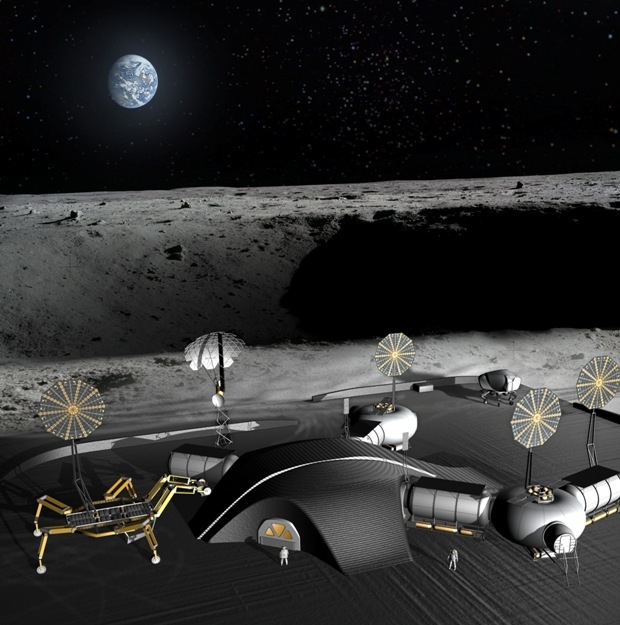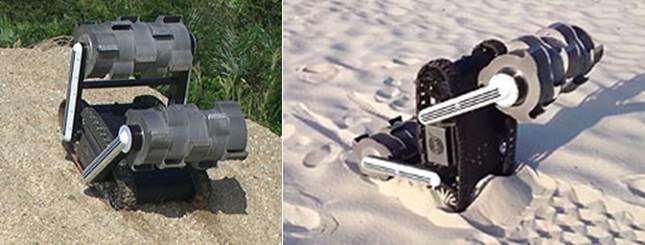March 29, 2014 – In anticipation of future missions to asteroids, the Moon and neighboring planets NASA has engineers working on prototype mining technology. These blue-collar robots have the important task of extracting and digging up local materials to build future habitats for humans.
What are the characteristics NASA wants to imbue into these mining robots? Autonomy, durability, mobility, repgrogrammability, enough weight to operate efficiently in low gravity, yet light to meet payload restrictions. The current prototype weighs 45 kilograms (100 pounds), and stands 76 centimeters (30 inches) tall. It can be delivered to the Moon or Mars using a lander similar in size to Phoenix which landed on Mars in 2008.
NASA has chosen the acronym RASSOR for its robotic miner. This is short for Regolith Advanced Surface Systems Operation Robot. The biggest challenge in deploying a robotic mining tool for low gravity environments is the weight. A light tool would not have the traction and stolidity to stay stable during a digging operation. To deal with this NASA has configured RASSOR with two rotating buckets at either end separated by a tractor-like tank body. The buckets not only dig but also help with mobility. Two pictures of the prototype appear below. As you can see RASSOR can lift both buckets in the air when moving from one location to another. It also can use one of the buckets to stabilize it when it needs to dig. RASSOR can right itself should it flip over, or if needed, lift its entire body off the ground if it should get stuck while in transit. You can watch RASSOR in action here.
In testing the current model the tank track mechanism has experienced some problems with stones getting lodged. Another prototype could use the type of wheels that currently are being used by Martian rovers. In any event based on what NASA has learned from this RASSOR, a model 2 version will come out for testing this year.
Why mine the regolith? Because it contains the building materials for creating human habitations on the surface of the Moon and Mars. And regolith also contains the ingredients to make rocket fuel.
But once mined how will the materials be processed? The likely technology is microwave-based. Using the same technology we use in ovens today here on Earth, astronauts on the Moon and Mars will be able to solidify lunar regolith to create building materials for structures and roads. Further heating to turn the regolith into molten rock will allow lunar or Martian miners to extract oxygen, critical to any permanent human presence. Besides microwave technology for manufacturing NASA is also looking at lasers and 3D printers in its plans to create the first permanent off-world habitats as seen in the picture below.




















